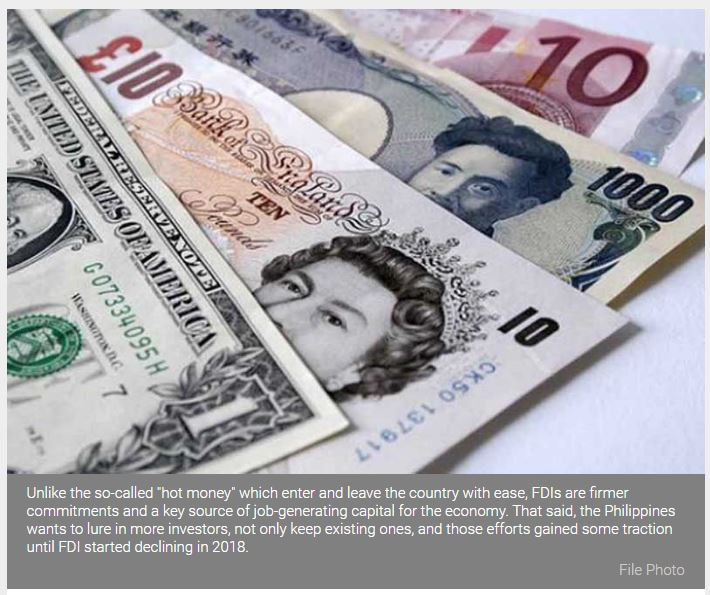Philippines: FDI inch closer to watered down forecast in November
MANILA, Philippines — Foreign direct investments continued to slump in November last year, although the decline moderated from the preceding month, keeping alive the central bank’s watered down forecast.
FDI posted a net inflow of $537 million in November as the entry of new investments outpaced those that headed for the exit during the month, the Bangko Sentral ng Pilipinas (BSP) reported Tuesday evening. That net inflow, however, was down 16.5% year-on-year.
But the latest contraction eased from 24.5% annual drop posted in October supposedly because of positive news on coronavirus vaccines soothing investors’ nerves. But for the BSP, the arrival of more contagious coronavirus strains make meeting last year’s projection of $6 billion all but definite.
For the first 11 months, FDI net inflow reached $5.8 billion, down 10.8% year-on-year.
“The recent contractions in net FDI inflows were largely affected by concerns over the resurgence of COVID-19 cases and re-imposition of quarantine measures in some advanced and emerging markets,” the BSP said in a statement.
Michael Ricafort, chief economist at Rizal Commercial Banking Corp., agreed with the BSP. “Offsetting risk factors include the new coronavirus variants that are more contagious that could lead to slower economic recovery amid risk of further lockdowns,” Ricafort said in an emailed commentary.
Whatever the final FDI tally is however, the Philippines is all set for a third straight year of FDI slide last year under the Duterte administration. That indicates that while the pandemic did heighten investment risks due to business disruptions, it only exacerbated existing worries long present in the Philippines including slowing economic growth and governance issues.
That FDI is on a downtrend is bad news for the Philippines out to attract a larger share of investments relocating from China and developed markets. This, and a sluggish pandemic recovery, prompted legislators to revive proposals to remove charter restrictions on foreign equity. The measure however is unlikely to pass with senators cool to amending the Constitution 15 months prior to elections.
That means that for now, FDI would have to search for optimism elsewhere such as the prevailing low interest rate environment that pushes down business costs, Ricafort said.
“Furthermore, relatively lower cost of inputs for investments as a result of softer demand conditions due to the COVID-19 pandemic may have also made FDIs cheaper from the point of view of multinational companies,” he added.
For November, equity capital placements, a gauge of new FDIs, declined 44.8% on-year to $96 million. Majority of fresh capital came from investors in the Netherlands, Japan and the US and invested mostly in companies engaged in financial and insurance, real estate and manufacturing.
On the flip side, $30 million worth of FDIs left the country during the month, up 57.3% annually. That yielded a net equity capital amounting to $66 million in November, plummeting 57.3% year-on-year. In 11 months to November, net equity capital placements grew 48.6% to $1.3 billion.
Replacements of FDI already here reached $56 million in November and $760 million for the first 11 months. Both were down 36.5% and 21.9%, respectively, BSP data showed.
The bulk of FDI were still in the form of intercompany borrowings between local offices here and their headquarters abroad. This type of inflow totaled $415 million in November, up 3.8% on-year. Year-to-date, debt placements still shrank 19.3% annually to $3.77 billion.
Source: https://www.philstar.com/business/2021/02/11/2076992/fdi-inch-closer-watered-down-forecast-november


 Thailand
Thailand




